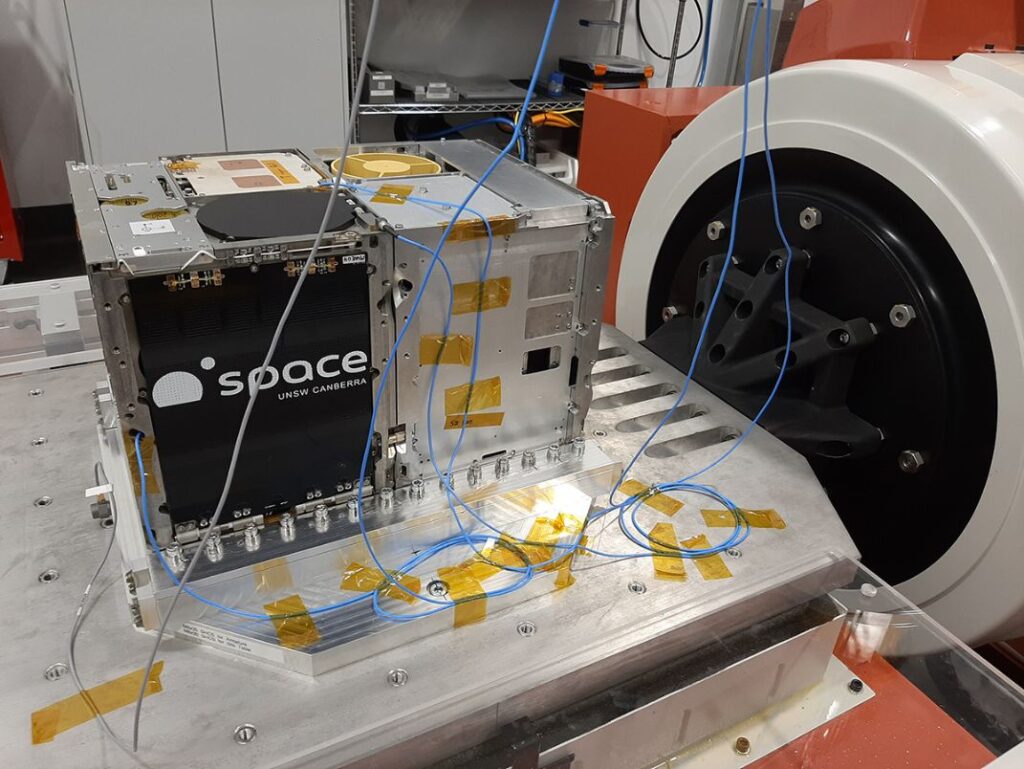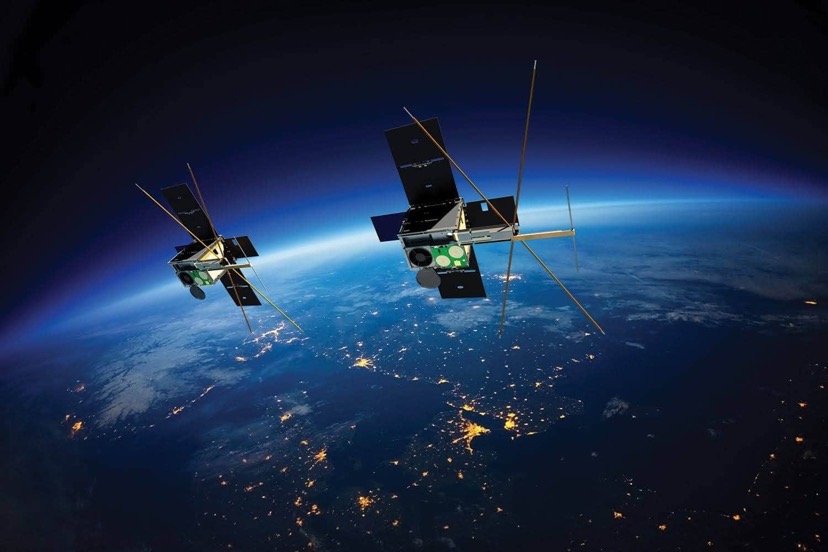A satellite developed and tested by engineers at UNSW Canberra Space is in its final testing stages before its planned launch in early 2021.
The M2 cube-sat is the third and final to be developed as part of a $10 million contract with the Royal Australian Air Force.
UNSW Canberra Space Director, Russell Boyce, said the satellite, which can split into two during orbit, will be vital in research and education for Defence and students studying engineering at UNSW Canberra.
“These versatile small satellites have re-programmable software defined radios on board and can change their purpose mid-mission, greatly improving their functional capabilities for multiple uses by Defence and civilian users alike,” he said.
“They are able to collect data and turn it into information in orbit that is ready for decision making.
“It has systems in orbit that can collect large amounts of data in a robust way and deliver it back to the user quickly.”
Testing on the satellite began in early June and with all things going well, is set to be in orbit during the first quarter of 2021.
M2 Mission Lead, Andrin Tomaschett, said the testing process had already covered a range of possible scenarios during orbit.

“So far we have tested how the electronics in the satellite operate in extreme hot and cold temperatures which is conducted in a Thermal Cycling Chamber at facilities at the Australian National University’s Mount Stromlo,” he said.
“This was followed by vibration testing where the satellite was placed on a shaker table. The table replicates the intense shaking that M2 will endure on launch.
“One of the final tests we conduct will be a pressure test which is conducted in a vacuum chamber. This will be run later in the year, closer to the launch date.”
Mr Boyce said the M2 Mission was a great way to shine the light on high quality work being done in the field in the Canberra region.
“I see a future where Canberra starts to look a little bit like Boston. Boston has two world class universities generating a large amount of innovative ideas and a local high-tech innovation sector,” he said.
“Canberra has a long way to go to get close to that, but we are on that path so it’s enormous opportunity in this city. There are some fantastic institutions in Canberra and some great young talent.”



